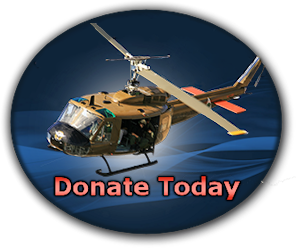ASSAULT HELICOPTER COMPANIES IN VIETNAM
It is important to understand some of the history of U.S. Army aviation in Vietnam. The following historical overview is abbreviated in deference to other, more exhaustive treatises. Because America’s participation in the Vietnam War was and remains controversial, EMU, Inc. takes no position on that issue. Our purpose is to preserve a small part of the history of the war, not to pass judgment on America’s involvement in it.
The American war in Southeast Asia, commonly referred to as the Vietnam War, lasted for almost fifteen years from the late 1950’s through the early 1970’s. The political context of the war as well as the details of how it was waged have been the subject of much historical scrutiny. Many military units that participated in the war have already received significant historical attention, to include the Army’s 5th Special Forces Group and 1st Air Cavalry Division, the Marine Corps generally, the Air Force and Navy aviation, Riverine and SEAL units. In fact, it can be argued that some of these units have dominated the history of the Vietnam War beyond their relative contributions to the war effort.
Other units that significantly contributed to the conduct of the war received scant attention from the news media at the time and probably because of this, have received scant attention in the historical record. It is the opinion of EMU, Inc. that one group of units that falls into this category are the Army aviation companies known collectively as Assault Helicopter Companies (AHC’s) which served primarily within the 1st Aviation Brigade in Vietnam, the largest single Army aviation unit ever formed. The exploits of the other primary component of Army combat aviation in Vietnam, the Air Cavalry, were widely publicized during the war and have received much attention in both fictional and historical accounts of the war since.
A total of approximately 70 Assault Helicopter Companies served in Vietnam at one time or another. The forerunners of these units began the helicopter war in Vietnam in 1961, long before the arrival of American ground troops and Air Cavalry units. Assault Helicopter Companies went on to serve in Vietnam until the last days of the American war in 1973, long after most American forces had departed. The initial Army helicopter units dispatched to Vietnam, named Transportation Companies (Light Helicopter), were equipped with the obsolescent Piasecki/Vertol CH-21 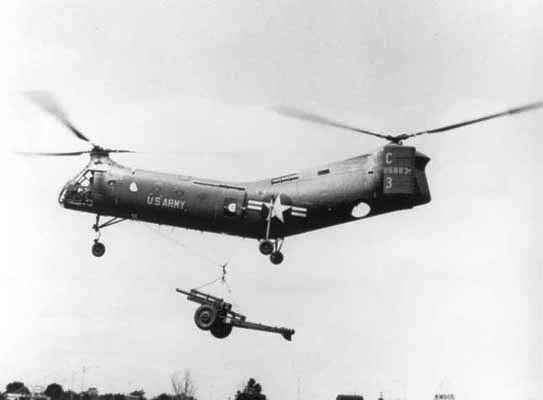 tandem rotor helicopter. They came to Vietnam strictly as troop transport companies without armed escorts. Once in Vietnam it became apparent that the CH-21’s needed protection from the unexpectedly intense level of enemy ground fire. To provide this protection, an experimental armed attack helicopter company was formed, the Utility Transportation (UTT) Company, to convert helicopters for this role, which came to be called gunships.
tandem rotor helicopter. They came to Vietnam strictly as troop transport companies without armed escorts. Once in Vietnam it became apparent that the CH-21’s needed protection from the unexpectedly intense level of enemy ground fire. To provide this protection, an experimental armed attack helicopter company was formed, the Utility Transportation (UTT) Company, to convert helicopters for this role, which came to be called gunships.
In the early days, these Transportation Companies and the UTT Company gained the first significant experience with helicopter warfare and perfected such tactics as combat assaults, close air support and aerial resupply long before they became associated with the 1st Air Cavalry Division. As the war progressed, the Transportation Companies were first renamed Aviation Companies (Airmobile Light) and later Assault Helicopter Companies to more accurately reflect their primary mission, combat assaults of infantry into battle. The gunships of the UTT Company were ultimately replaced in these renamed companies as organic gunship platoons.
Beginning in 1963, CH-21’s in these renamed units and other newly arriving units were replaced with soon to be ubiquitous Bell UH-1 series helicopters (commonly known as Hueys), initially UH-1A 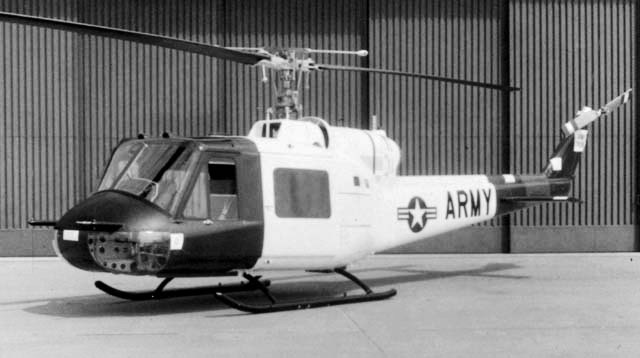 and B models
and B models 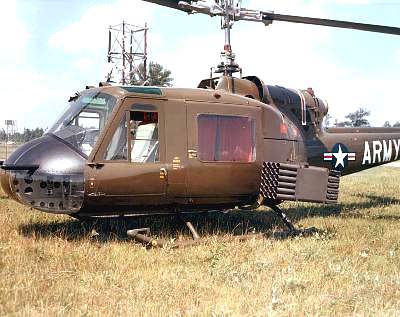 Early on, these aircraft served both as slicks (troop carriers) and gunships (armed attack helicopters). The precise origin of the term slick is unclear, but it is believed to reflect the fact that troop carriers did not carry offensive weapons mounted to the exterior of the aircraft, although they did carry flexible machine guns in the doors manned by the crewchief and a doorgunner. On the other hand, gunships were exactly what their name implied, heavily armed helicopters. These gunships carried various combinations of externally mounted machine guns, rockets and automatic grenade launchers in addition to the flexible doorguns carried by the slicks.
Early on, these aircraft served both as slicks (troop carriers) and gunships (armed attack helicopters). The precise origin of the term slick is unclear, but it is believed to reflect the fact that troop carriers did not carry offensive weapons mounted to the exterior of the aircraft, although they did carry flexible machine guns in the doors manned by the crewchief and a doorgunner. On the other hand, gunships were exactly what their name implied, heavily armed helicopters. These gunships carried various combinations of externally mounted machine guns, rockets and automatic grenade launchers in addition to the flexible doorguns carried by the slicks.
By 1965, most Assault Helicopter Companies had replaced their UH-1A/B slicks with the ultimate utility helicopter of the Vietnam War, the slightly larger UH-1D ![]() (later redesignated UH-1H
(later redesignated UH-1H 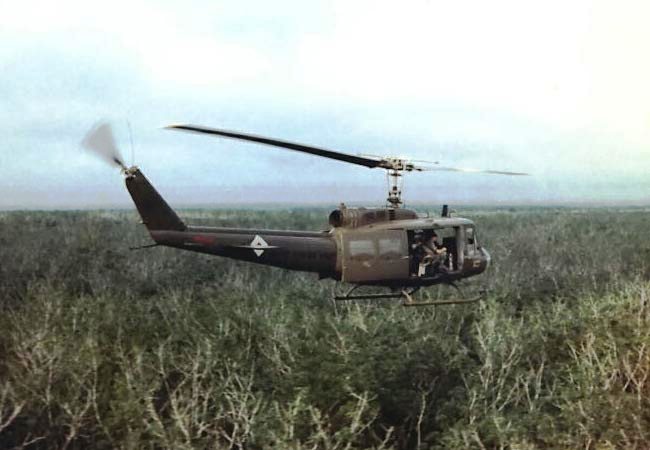 ), which came to be one of the most recognized visual symbols of the war. Most AHC’s continued to utilize the UH-1B and later the UH-1C
), which came to be one of the most recognized visual symbols of the war. Most AHC’s continued to utilize the UH-1B and later the UH-1C 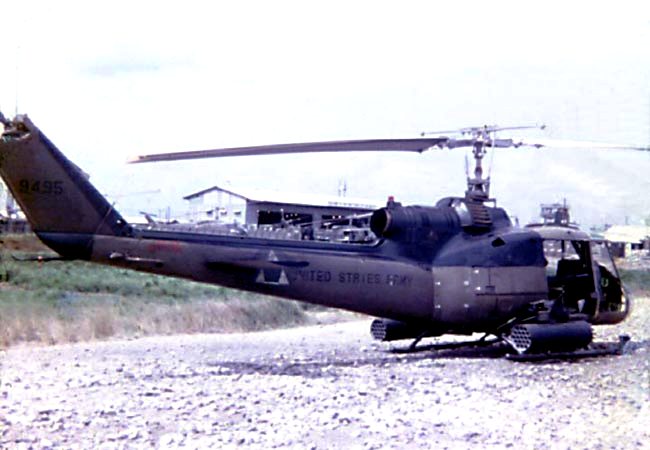 as gunships. The UH-1C was the most sophisticated four-place gunship to see Army service. These aircraft used the same rotor system as the two-place Bell AH-1G
as gunships. The UH-1C was the most sophisticated four-place gunship to see Army service. These aircraft used the same rotor system as the two-place Bell AH-1G 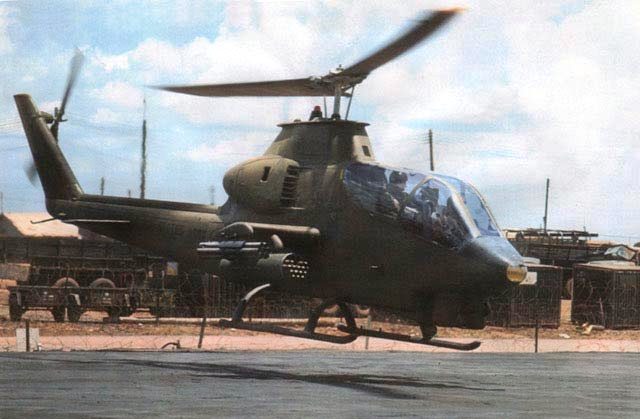 Cobra which gave both aircraft much greater maneuverability than earlier gunship types. After 1967, some AHC’s converted to the Cobra gunship, but many also fought on with the UH-1B and C (later redesignated the UH-1M) as late as 1972.
Cobra which gave both aircraft much greater maneuverability than earlier gunship types. After 1967, some AHC’s converted to the Cobra gunship, but many also fought on with the UH-1B and C (later redesignated the UH-1M) as late as 1972.
Combat assaults and visual reconnaissance were the sharp edge of helicopter warfare in Vietnam. Combat assaults were primarily the responsibility of Assault Helicopter Companies. Visual reconnaissance was primarily the responsibility of similar sized units called Air Cavalry Troops (ACT’s). However, the line between these missions was often blurred. In order to properly conduct combat assaults, an AHC needed to perform a certain amount of reconnaissance. And, in order for an ACT to properly exploit its reconnaissance, it needed to perform combat assaults, although generally on a smaller scale than AHC’s.
During the long course of the war, Assault Helicopter Companies always constituted the majority of Army combat aviation units in Vietnam by a ratio of approximately 2 to 1 compared to Air Cavalry Troops. Although the primary mission of AHC’s was always to conduct combat assaults, they were also responsible for aerial resupply of troops in the field, medical evacuation, gunship support for troops in contact with the enemy and often the more mundane tasks of direct combat support, liaison and command & control. Generally, Air Cavalry Troops did not perform these other missions.
A standard independent Assault Helicopter Company contained roughly thirty aircraft. Approximately 20 Bell UH-1D/H models formed two slick platoons and 8 UH-1 gunships or Cobras formed a separate gun platoon. In most units, the slick platoons were designated the 1st and 2nd platoons and the gun platoon was designated the 3rd platoon. An additional 1 or 2 aircraft were often assigned to the maintenance or headquarters platoons for liaison and general support duties.
With the arrival of larger American and allied units beginning in 1965, many Assault Helicopter Companies were assigned to Vietnam as organic elements of infantry, air cavalry and airmobile divisions. These organic units took essentially the same form as the original Assault Helicopter Companies except they were sometimes organized as complete battalions rather than self-contained, independent companies. These divisional Assault Helicopter Battalions (AHB’s) were usually comprised of 3 slick companies and 1 gunship company. Unlike independent AHC’s, each company was made up entirely of either slicks or gunships. A representative example of this type of battalion was the 158th Assault Helicopter Battalion of the 101st Airborne/Airmobile Division.
Outside the divisional Assault Helicopter Battalions, Assault Helicopter Companies were generally assigned to Combat Aviation Battalions (some organic to infantry divisions, most not) which were located throughout Vietnam. The majority of these highly flexible battalions came under the command of the 1st Aviation Brigade. Within these battalions, several Assault Helicopter Companies and other Army aviation units provided helicopter support to infantry, artillery and advisory units in the Military Region to which they were assigned. Approximately 16 of these battalions existed in Vietnam during the course of the war and were divided into 5 or 6 aviation groups within the 1st Aviation Brigade.
Whatever the structure of the units, the mission of Assault Helicopter Companies and Assault Helicopter Battalions was the same. In fact, regardless of the various names given to these units during the war, once airmobile doctrine was established in the early 60’s by the pioneering Transportation Companies and the UTT Company, very little in the mission of these companies and battalions changed throughout the war except for the sheer number of units involved. Obviously, there were tactical nuances that varied between units and over time, but these nuances were completely overshadowed by the consistency of the mission throughout the war.
The following authors and publications provided much of the historical data discussed below:
1) Vietnam Order of Battle, Shelby Stanton, Gallahad Books,1987
2) Membership Directory of the Vietnam Helicopter Pilots Association, Volumes 15-203) The Royal Australian Navy in Vietnam, Denis Fairfax, Australian Government Publishing Service, 1980
4) Get the Bloody Job Done, Steve Eather, Allen and Unwin, 1998.
EMU INC. takes full responsibility for any inaccuracies in the information presented or the opinions derived there from.



